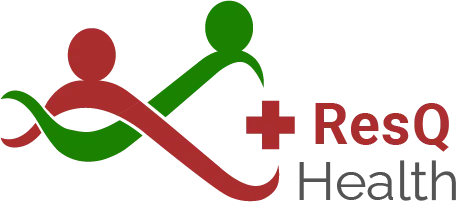
How to Collect and Analyze Student Feedback Effectively
Getting feedback from students is like looking through a window into your training’s success. It helps you understand what works well and what might need some change. Listening to students' thoughts and experiences can guide you to make smarter decisions for your teaching approach.
When students feel their opinions matter, they engage more and enjoy learning. This feedback forms a bridge between educators and learners, supporting a more interactive and tailored learning environment. It's more than just checking a box; it’s about growing and adapting to meet students' needs.
Effective feedback collection and analysis lead to improvements that benefit everyone involved. It helps educators fine-tune their methods and enhances the overall learning experience, making every session more effective and enjoyable. By focusing on feedback, you turn student insights into powerful tools for educational success.
Understanding the Importance of Student Feedback
Student feedback is a key part of improving any training program. It provides insights into what works well and what might need a little fixing. By listening to students, trainers can adjust courses to better meet their needs, making the learning experience more effective and enjoyable. This feedback acts like a mirror, showing both strengths and areas for growth.
Feedback doesn’t just tell us what needs improvement; it also helps shape teaching strategies. Knowing what students find helpful or confusing allows trainers to tweak their methods. This could mean altering lesson plans, changing teaching styles, or introducing new learning tools. By responding to feedback, trainers can deliver content in ways that students find more clear and engaging.
Lastly, feedback plays a vital role in boosting student satisfaction. When students feel heard and see changes based on their input, they tend to be happier and more involved. This satisfaction leads to better learning outcomes and even higher retention rates. Creating an environment where students feel comfortable sharing their thoughts encourages open communication, fostering a supportive educational setting.
Methods for Collecting Student Feedback
Collecting student feedback can be done in several ways, each offering valuable insights. Surveys and questionnaires are one of the most common methods. They allow students to share their thoughts in a structured format and can be used to gather quantitative data that highlights trends and patterns.
Another effective approach is using focus groups and one-on-one interviews. These methods encourage open dialogue and allow students to express their opinions in detail. This qualitative data helps trainers understand the deeper reasons behind students’ experiences and feelings.
Lastly, digital feedback tools and platforms provide a modern way to gather input. These tools make it easy to collect and analyze feedback quickly. Students can provide feedback through apps or online forms, making it accessible and convenient for everyone.
Choosing the right method or combination of methods can lead to more insightful feedback, helping trainers make meaningful improvements to their programs.
Analyzing Feedback for Actionable Insights
Once you have collected student feedback, analyzing it is your next step. Start by sorting and categorizing the responses. This helps to make sense of large amounts of data and highlights what stands out the most. Group similar comments together to see what issues or praises are recurring.
Identifying common themes and trends is crucial. Look for patterns in the feedback that point to particular strengths or areas that need improvement. These themes can provide a clear direction for where to focus your efforts. Whether it’s a specific module, teaching method, or technology issue, understanding these themes can guide your strategy.
Turning feedback into goals and improvement plans means setting clear objectives based on what students have reported. Develop action plans that address the identified issues while enhancing what already works well. These plans should have measurable targets to track progress and ensure that changes effectively meet student needs.
Implementing Changes Based on Feedback
After analyzing feedback, it’s essential to implement changes that reflect the insights gained. Start by prioritizing actionable feedback. Determine which areas need immediate attention and which can be addressed in the longer term. This approach ensures you address critical issues while planning for future improvements as well.
Communicating changes to students is another important step. Let them know what actions have been taken based on their feedback. This transparency builds trust and shows that their input is valued. Students are more likely to continue providing feedback when they see it leads to tangible results.
Monitoring the results of implemented changes is the final step. Keep track of how these changes affect the learning environment and student satisfaction. Use ongoing feedback to adjust your strategies and keep improving. This continuous loop of feedback and adjustment helps maintain a responsive and effective training program.
Conclusion
Collecting and analyzing student feedback is a powerful way to enhance any training program. By understanding what students think and feel, you can tailor your approach to better meet their needs and expectations. Effective feedback management not only improves course quality but also fosters a positive learning environment, encouraging student engagement and success. Remember, feedback is an ongoing process, and staying proactive in gathering insights will lead to a more dynamic and impactful learning experience.
Reach out to ResQ Health to learn more about managing student feedback efficiently. Enhance your training business with our comprehensive platform, which includes user-friendly tools for collecting and analyzing feedback. Start transforming your training sessions today with solutions that prioritize student success and satisfaction.


Building healthy communities through the power of rescue training!
Quick Links
Our Solutions
Office
276 Newport Road, Suite 205
New London, NH 03257
Days Open
Monday - Friday
9 AM - 5 PM
